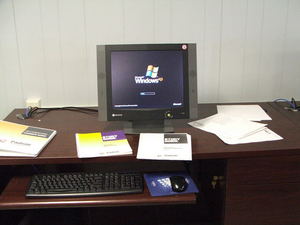Anyone who likes covered calls has probably also taken a look at ratio writes. The covered call yields double-digit annualized returns with no market risk beyond ownership of stock; and so their popularity continues to grow.
This claim is based on some assumptions. First, the strike of the covered call has to be higher than the basis in the underlying stock. Second, the call is selected to yield the best returns; this is normally one expiring in two months or less. Annualizing the return produces the double digit return. (To annualize, calculate return by dividing call premium by the strike; then divide the return by the holding period in months; and finally, multiply by 12 months).
Beyond these basics of covered call strategies, the ratio write is intriguing because it increases even the double-digit returns from covered calls. For example, if you own 300 shares and write three calls, it creates a 1:1 relationship. But if you write four calls, you set up a ratio write at 4:3, or four calls and 300 shares. What is the risk of the 4:3 ratio write versus the 1:1 covered call?
Some traders view this as a diversified risk. The chances of all four calls getting exercised is slim, considering that one or more can be closed or rolled forward. Others will point out, however, that if the underlying’s price rises beyond the strike, all four calls will be exercised and the one uncovered call could easily wipe out the profits on the other three.
This is where the variable ratio write is valuable. It solves this problem. For example, if you own 300 shares you bought at $48, you can set up a 4:3 variable ratio write by selling two 50 calls and two 55 calls. The variable strikes protect you from the potential loss of exercise in the uncovered call. If the stock price rises above $50 per share, the two lower-strike calls will be exercised (unless they are closed or rolled forward). At that point, one or both of the higher-strike calls can easily be closed or rolled. Since one of the two is covered by the remaining 100 shares of stock (seven points above basis), the concern only extends to the fourth position. This can be closed or rolled to avoid or defer exercise.
The variable ratio write does add a degree of risk beyond the covered call strategy. However, it is a fairly manageable level of risk. It can be varied considerably as well. For example, instead of splitting four contracts equally, you could open one contract at 50 and three at the higher level of 55. The 7-point profit upon exercise of two calls provides a 14-point cushion for the uncovered fourth short call. So as long as a 14-point surge is unlikely in the underlying stock, the risk is not that high. Even if the stock price does grow that far, rolling forward and up extends or offsets that risk entirely. This strategy is worth taking a look and, possibly, including in your arsenal of option strategies.
To gain more perspective on insights to trading observations and specific strategies, I hope you will join me at ThomsettOptions.com where I publish many additional articles. I also enter a regular series of daily trades and updates. For new trades, I usually include a stock chart marked up with reversal and confirmation, and provide detailed explanations of my rationale. Link to the site at ThomsettOptions.com to learn more.
I also offer a weekly newsletter subscription if you are interested in a periodic update of news and information and a summary of performance in the virtual portfolio that I manage. All it requires is your e-mail address. Join at Weekly Newsletter I look forward to having you as a subscriber.

